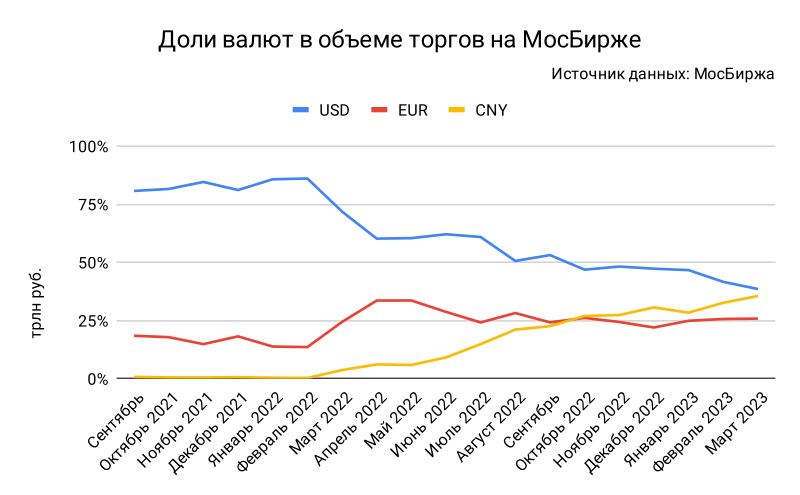
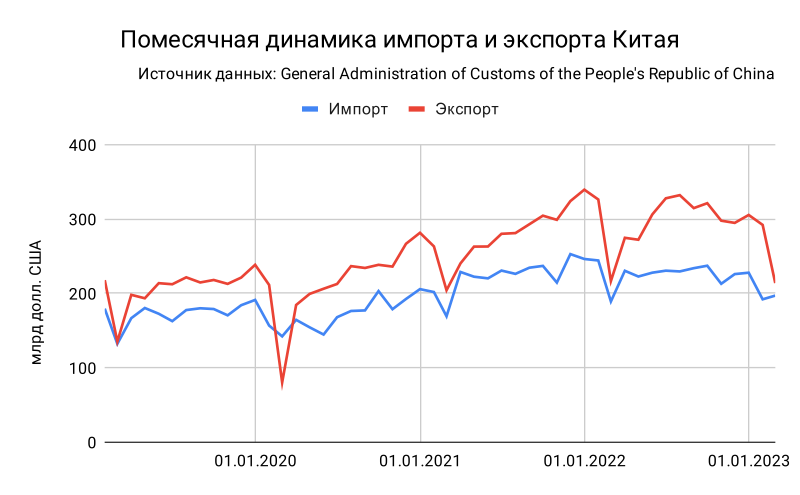
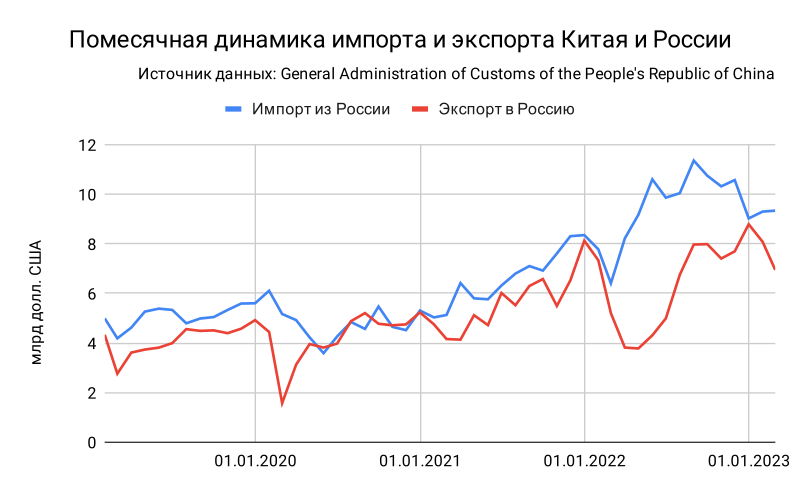
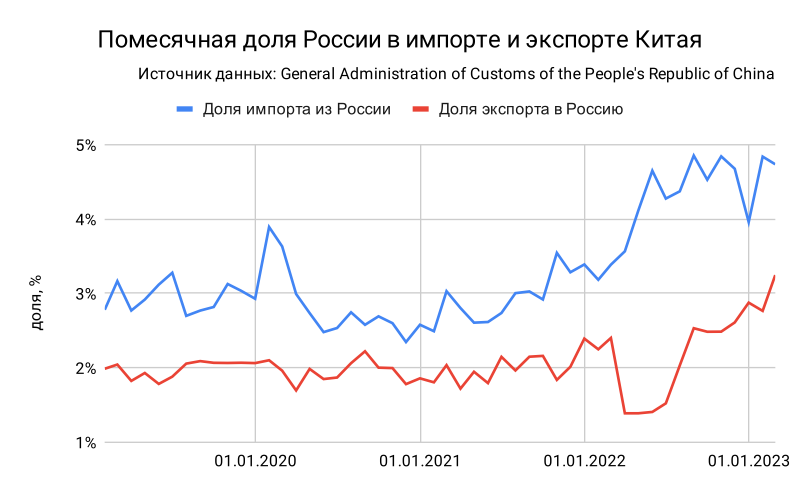
Konstantin Novik
All the information provided is the personal opinion of the authors, it is not an individual investment recommendation, an inducement to buy or sell financial instruments, or to conclude contracts. The choice of investment objects should meet personal preferences and the ability to accept various risks.
The Bank of Russia noted in a recent review of the financial sector, that the combined weight of the US dollar and the euro in the calculation of imports and exports is holding at 50% despite the limitations and risks. Some of these payments may be made in currencies other than the currency of the contract. The Chinese yuan is one of the alternatives, so it is interesting to assess the situation on the foreign exchange market and the dynamics of trade with the eastern neighbor.
Keeps on growing yuan trading volume on Moscow Exchange: RUB 2.3 trillion in March compared to 2.5 trillion rubles in USD and RUB 1.7 trillion by euro. On some days, the volume of trading in yuan exceeds dollar indicators. The total turnover in three currencies increased: from 4.2 trillion rubles in January to RUB 6.4 trillion in March.
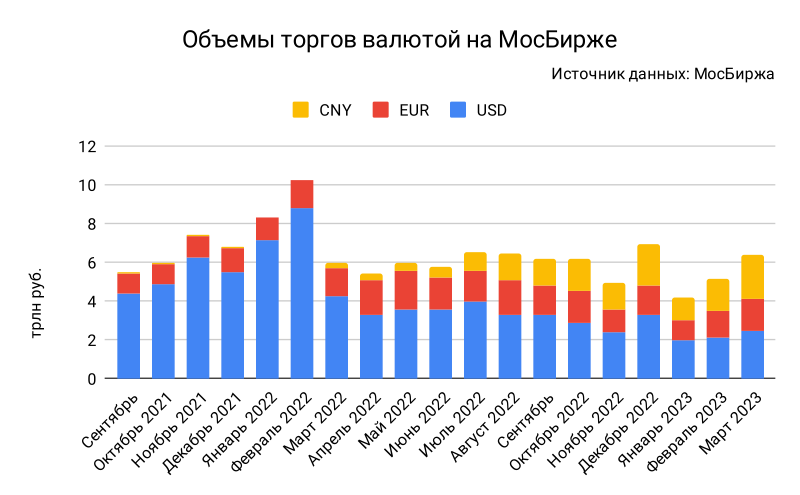
The picture looks interesting, if you look at the shares of currencies in the trading volume. At the beginning of 2022, the US dollar occupied 81%but by the end of Q1 2023, the value dropped to 39%. The share of the yuan rose from 1% before 36%. The Chinese currency partially replaced the American one. The euro shows unexpected dynamics: growth from 18% at the beginning of 2022 until 26% at the end of Q1 2023. The European currency is not losing popularity, despite the sanctions risks.

Chinese foreign trade turnover shows a seasonal reduction, which is explained by the long New Year holidays.

Shows a similar trend volume of trade with Russia: traditional reduction at the beginning of the year. The only caveat: the decline in Russian imports began in September 2022, which correlates with the fall in oil prices.

Russia’s share in the total volume shows a representative picture in comparison with absolute indicators. China traditionally imports significant volumes of raw materials, so lower prices led to a reduction in imports in general, but Russia’s share remains at peak values 4.5-4.8%. Exports to Russia are increasing: in February, the share reached 3.2% compared to the average 2% in 2019-2021 The data does not take into account flows through third countries, so the result may be higher.

Continue to develop economic relations between Russia and China, which is confirmed by statistics. The ratio of import and export flows affect the exchange rate of the ruble against the yuan, so operations with Chinese currency within the framework of the budget rule are not devoid of logic. It is noteworthy that at the end of December 2022, the volumes of imports and exports almost coincided.
Yuan takes the place of the dollar in the foreign exchange market, but the share of the euro unexpectedly remains at the level 25% since the middle of last year. An increase in the number of financial instruments in Chinese currency will be an additional factor that will support interest in the yuan. The dollarization of the economy may be replaced by a trend towards yuanization.
With partial or full use, a link to the source is required.
Source







